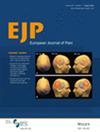Predictive Ability of Previous Pain and Disease Conditions on the Presentation of Post-COVID Pain in a Danish Cohort of Adult COVID-19 Survivors
Abstract
Background
Even though many post-COVID pain risk factors have been identified, little is known about the predictive profiles of these risk factors for the development of post-COVID pain.
Methods
Data was collected from two separate questionnaires assessing demographics, pre-existing medical comorbidities, pain history, and post-COVID pain experience. Socioeconomic data and COVID-19 RT-PCR test results were collected from Danish registries. The study cohort (n = 68,028) was stratified into two groups reporting pre-COVID pain (n = 9090) and no pre-COVID pain (n = 55,938). Forward-selection prediction models were employed to identify predictor profiles for post-COVID pain in the full study cohort (Model 1) and the stratified groups with (Model 2) and without (Model 3) pre-COVID pain from 58 potential risk factors.
Results
Model 1 achieved a 5-fold cross-validated AUC (cvAUC) of 0.68. Use of pain medication, stress, high income, age, female gender, and weight were the top predictors contributing to 97% of the model performance. Model 2 (cvAUC = 0.69) identified use of pain medication, breathing pain, stress, height, physical activity, and weight as the top predictors contributing to 98.6% of model predictive performance. Model 3 (cvAUC = 0.65) identified stress, female gender, weight, higher education, age, high income, and physical activity as the top predictors contributing to 98.5% of model predictive performance. Height was unique to Model 2, while being female and higher income were unique to Model 3.
Conclusions
The study highlights potential important predictors, and further research is needed to describe these in detail. The results may apply to the understanding of post-viral pain sequelae after other viral infections.
Significance Statement
The explorative study investigates the predictive ability of a battery of pre-COVID risk factors potentially associated with the development of post-COVID pain. This article presents the profiles of predictors of interest in COVID-19 survivors with and without pre-COVID pain. The results will contribute to the understanding of patient profiles that might develop post-COVID pain conditions and provide a first step towards focused clinical predictive research.


 求助内容:
求助内容: 应助结果提醒方式:
应助结果提醒方式:


